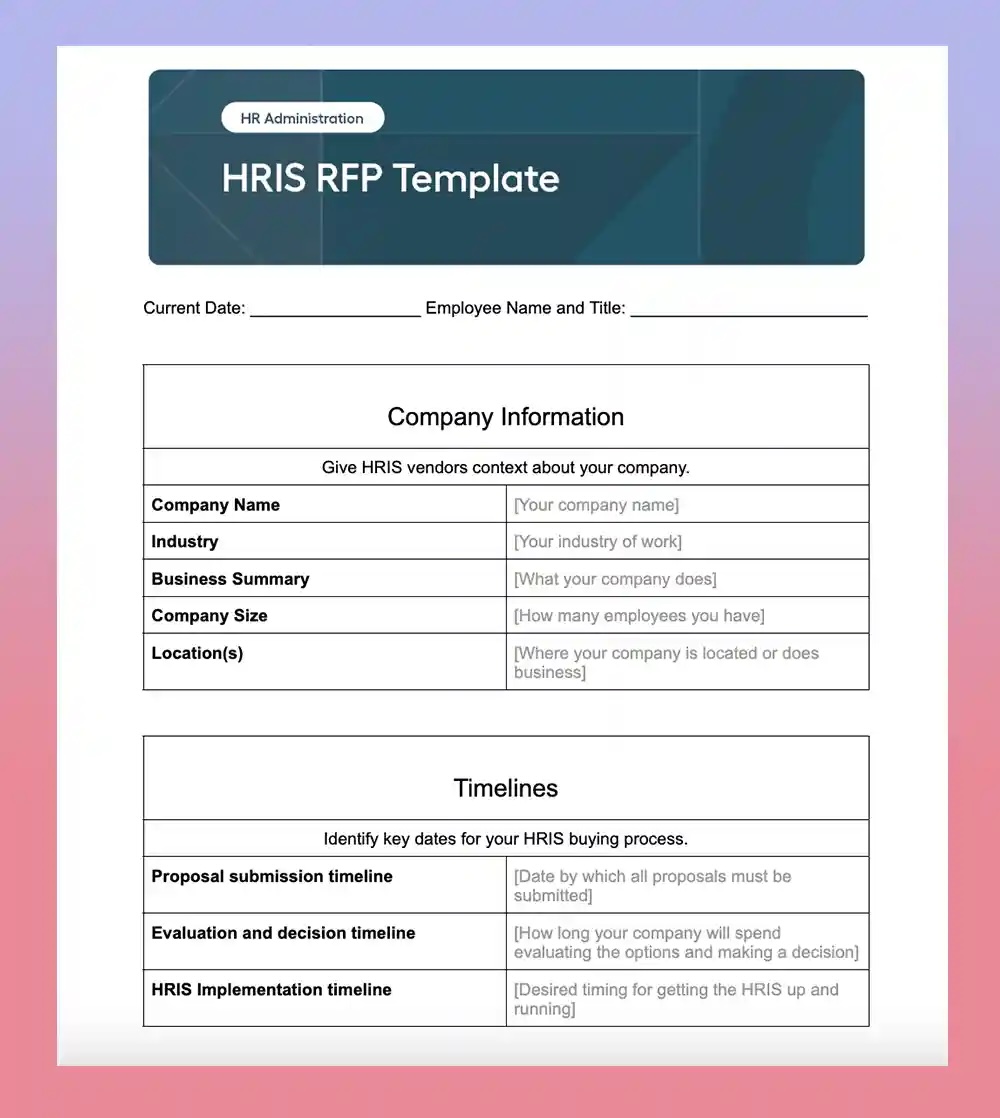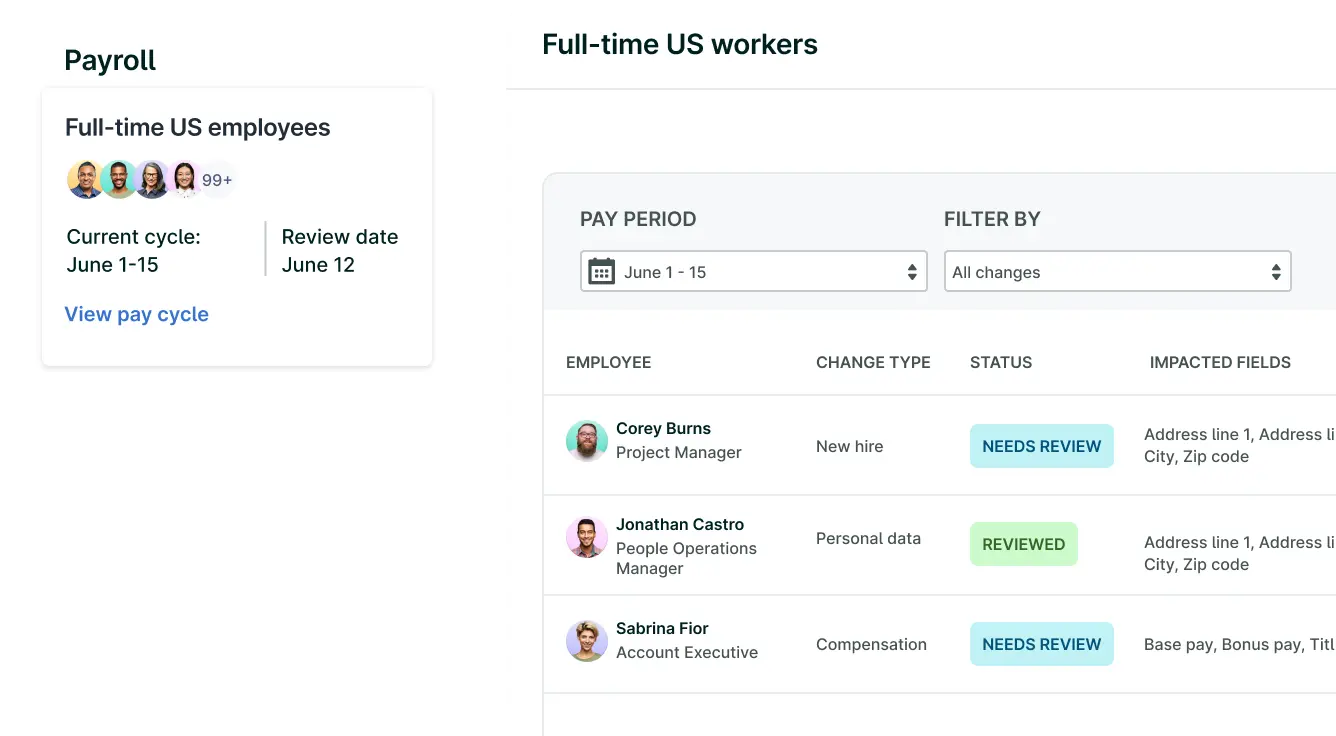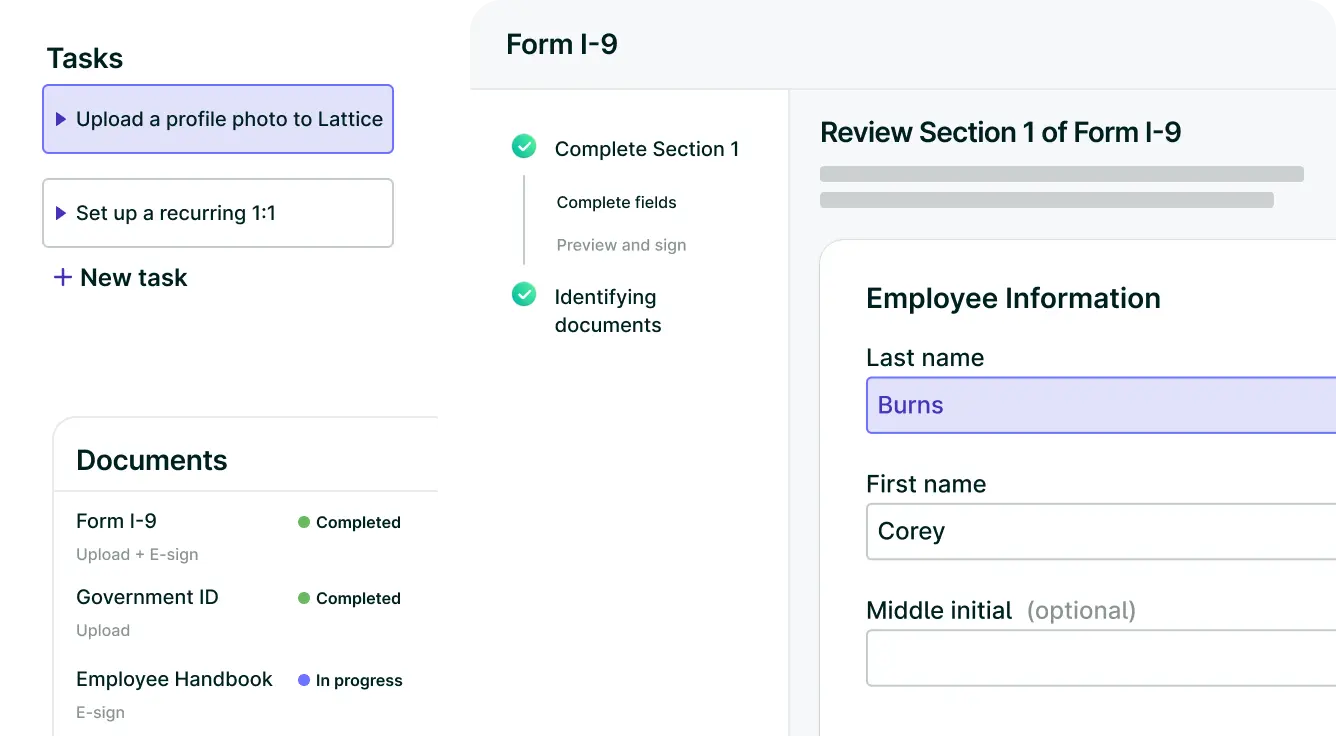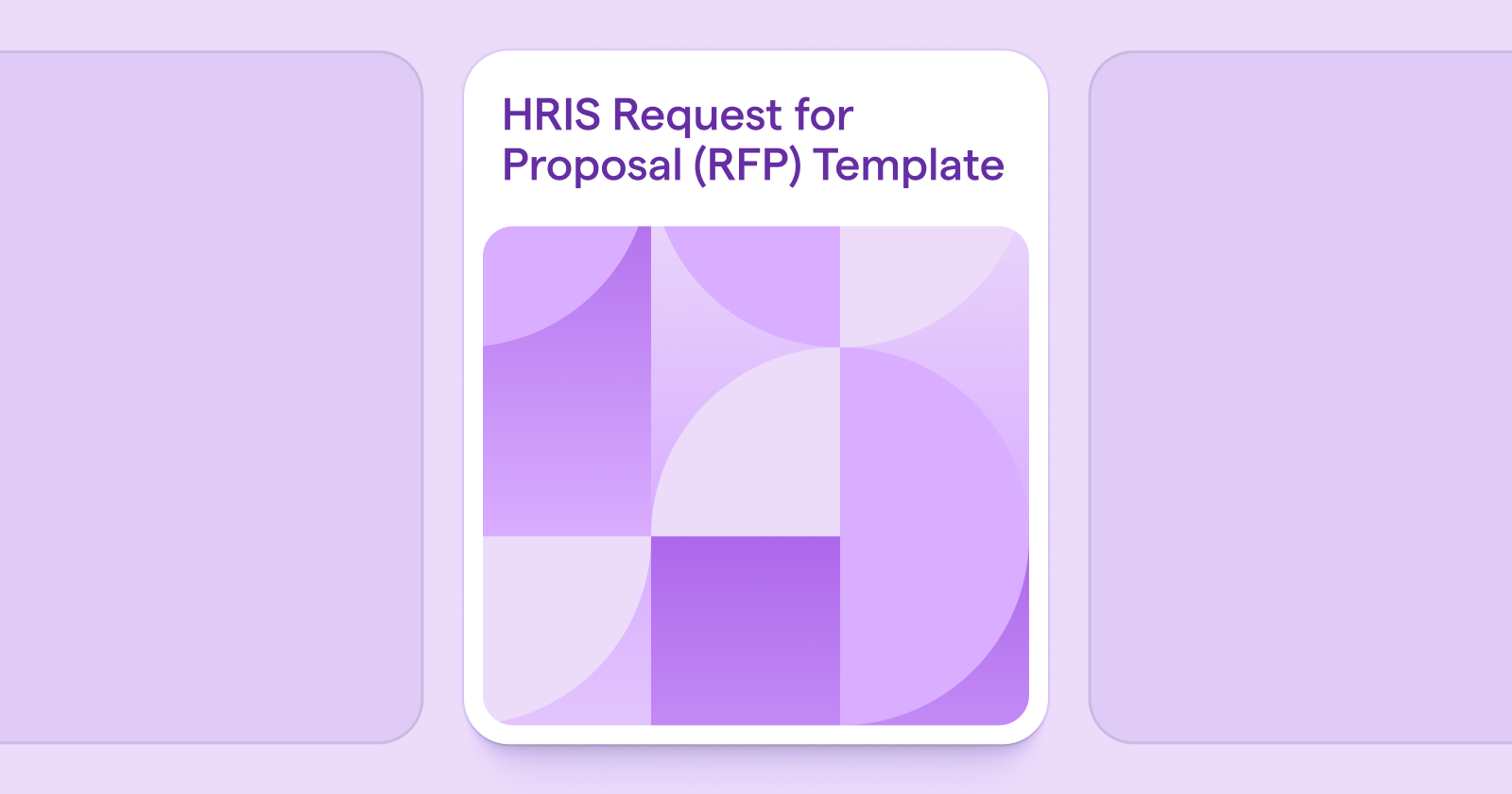A request for proposal (RFP) is a document companies use to ask software or service vendors for a formal proposal. It tells vendors the information they should provide in their proposals, so you can fully evaluate their offer.
While useful for any major HR technology purchase, RFPs are especially important when buying a human resources information system (HRIS). When you implement a new HRIS or human resources management system (HRMS), you’re trusting a third party with sensitive employee data, so you need to make sure you’re choosing a secure solution. It also needs to integrate smoothly with your existing systems to ensure no data is mismanaged or lost.
A clear, structured RFP helps you compare HRIS vendors on what really matters. Without one, vendors may only include the details they want to highlight in their proposals, and you won’t be able to make an informed decision.
An HRIS RFP helps you:
- Get clear on your procurement, security, and privacy requirements
- Vet vendors for compliance (GDPR, SOC 2, HIPAA, etc.)
- Spot hidden risks, like limited support or weak access controls
We’ve created a free HRIS RFP template to help you and your vendors slow down, get aligned, and make sure employee data stays protected every step of the way.
HRIS RFP Template

This free HRIS RFP template walks you through the key details vendors need to know to produce a comprehensive proposal for you.
It includes sections for:
- Your company background and HR goals
- Timelines for vendor proposal submission, decision-making, and implementation
- The context for your purchase, including why you’re looking, what problems you’re trying to solve, and your organization’s priorities
- Your integration needs
- Key stakeholders involved in the selection process
- Evaluation criteria across functionality, scalability, security, and support
- Proposal format, required attachments, and instructions for submission
Why use this template?
- It standardizes the RFP process. You’ll get more consistent, comparable proposals.
- It acts as a forcing function to get all stakeholders on the same page before you start reviewing proposals.
- It highlights what matters most to you. You can prioritize security, integrations, and business needs up front.
- It prompts vendors to be transparent about pricing and support offerings.
- It saves time for your team and vendors by focusing everyone on the right details from the start.
Get the HRIS RFP Template to discover what each HRIS vendor truly offers — not just what’s in the sales deck.
HRIS Request for Proposal: What It Is and When It’s Needed
An HRIS RFP is a document you send to software vendors outlining what you’re looking for in a human resources information system. It’s your opportunity to clearly define your company’s goals and technical requirements so vendors can respond with proposals that match.
You’ll want to create an RFP when:
- You’re evaluating multiple HRIS vendors and need to compare them with the same metrics.
- You want to build agreement between multiple stakeholders in the selection process before you start.
- You’re managing sensitive employee data and need to ensure compliance and security.

Covering the elements in the template, such as decision timelines, integration requirements, and desired impact, helps vendors tailor their proposals to your specific context. It also gives your team a shared framework for evaluating options, rather than relying on sales pitches or generic feature lists.
As Faye Almeshaan, founder and CEO at Almeshaan Consulting, put it:
“Knowing your ‘must-haves’ and ‘nice-to-haves’ upfront makes it easy to quickly eliminate the no-gos and focus on comparing the real contenders. It’s basically your shopping list to keep you from impulse buying the wrong HR tool!”
And finding the right HRIS really matters, because the technology you use will dictate the employee experience you can create.
Take Lattice customer Sendle, for example. As they scaled, the HR team realized they needed a system that could support a better onboarding experience and build a feedback-driven culture.
With Lattice, Sendle introduced a hybrid onboarding model and built consistent feedback habits into regular workflows, raising their “actionable feedback” engagement score from under 40 to over 90. That transformation started by identifying what really mattered to them in a new platform.
We’re a remote-first, global company. But every Sendler deserves to start on the same foot, no matter where they are. Lattice HRIS helps us deliver that kind of equity — at scale.
- Rachel Moore, VP of People, Sendle
A well-structured request for proposal ensures the conversation stays focused on what matters most to your organization and helps you avoid costly missteps during implementation.
Customizing Your HRIS RFP Template
This template is intended to get you started, but you’ll want to modify it to reflect your unique needs. Here are a few ways to adapt the template for your organization.
Timelines
By setting clear timelines, you help vendors understand your expectations and pace. Be sure to include:
- A proposal deadline: When you want responses back from the vendor
- A decision timeline: When you expect to choose a vendor
- Implementation start and end dates: So vendors can assess their capacity
These details make sure vendors only respond if they can meet your schedule, and help you avoid delays later.
Scope of Support
Think beyond features. What kind of service will you need from your HRIS partner?
- Will you need hands-on help with the implementation process?
- Do you want access to a dedicated support manager?
- What level of troubleshooting or customer training will be needed?
Outlining this upfront helps you avoid support issues down the road.
{{rich-highlight-2}}
Identifying Specific Requirements
This is where you define your must-haves. These could include:
- Scalability: Can the HRIS grow with your company, both in terms of functionality modules and handling more users?
- Ease of use: What’s the user experience like? Does the tool have strong self-service capabilities?
- Social proof: Has it worked for companies like yours?
- Integrations: Does it connect with your payroll, applicant tracking system, or identity provider?
The more specific you are, the better the proposals you’ll get in return.
Desired Impact on Work Culture
This is where you explain the “why” behind the purchase. What kind of workplace are you building, and how can software help you get there?
For example, maybe you want:
- More transparency
- A stronger culture of feedback
- Better visibility into performance and engagement
- A more connected remote team
Share the bigger picture. Good vendors will tailor their proposal to support those outcomes.
Important Questions
Framing your questions the right way will help you get more useful responses.
- Ask yes/no questions for dealbreakers. For example, you could ask, “Does this system support SSO?”
- Use open-ended questions to learn how vendors think. For instance, you might ask, “How do you support change management during rollout?”
Business and HR Priorities
What are you really trying to accomplish? Be honest and specific. Give examples where possible.
- “We want to reduce time spent on manual admin tasks.”
- “We need better visibility into performance data.”
- “We’re building a feedback culture and want the system to support that.”
The more clearly you define your goals, the easier it will be to spot the right fit.
Evaluating the Right HRIS for Your Goals
Once the RFP responses roll in, you’ll need an evaluation process to build out your shortlist. A good vendor response should go beyond generic product features. You want to see evidence that they understand your business and your priorities.
As you review software proposals, ask yourself:
- Were your questions answered clearly and thoroughly? Or did they gloss over key details?
- Does the vendor’s unique value proposition match what you’re trying to solve?
- Does the platform match the scope of what you’re looking for? Some HRIS platforms have full human capital management (HCM) functionality, while others are more niche.
- Did they share social proof, and was it relevant to your organization (for example, customer stories, metrics, or examples from similar companies)?
- Did they address your organization’s needs, like integrations, change management support, or specific features?
Look for responses that connect the dots between what you asked for and what they offer. A polished pitch deck is nice, but alignment on goals, values, and support is what matters most in the long run.

Have an HR software checklist or Excel sheet on hand to make sure you don’t get swayed by a great sales pitch. Here’s an HRIS evaluation template you can use if you don’t already have one.
{{rich-highlight-1}}
Build a high-performance culture with the right HRIS.
Lattice HRIS doesn’t just help HR teams run more efficiently. It also helps the entire organization perform better. By connecting talent management, performance, and employee engagement in one platform, Lattice gives teams the tools they need to align around shared goals and create a culture of continuous improvement.
As Taylor Kelly, head of HR at Lattice customer Scrum Alliance, put it:
“With the automation of HR processes and hours of my time back each month, I can focus on executing our HR strategic roadmap which aims to drive org performance and enable greater business results.”
With Lattice HRIS, you can:
- Encourage continuous feedback and check-ins so employees get the support they need to grow.
- Tie engagement insights directly to performance and development programs.
- Make data-driven decisions that actually move the needle on team effectiveness.
If you’re ready to build a stronger, more aligned organization, start by finding the right HRIS. Download our HRIS RFP template, or book a demo to see Lattice in action.

✨ The RFP Template of Your Dreams
Ever wish you had an RFP that was already filled with all your hopes and dreams? We think ours will do the trick.








